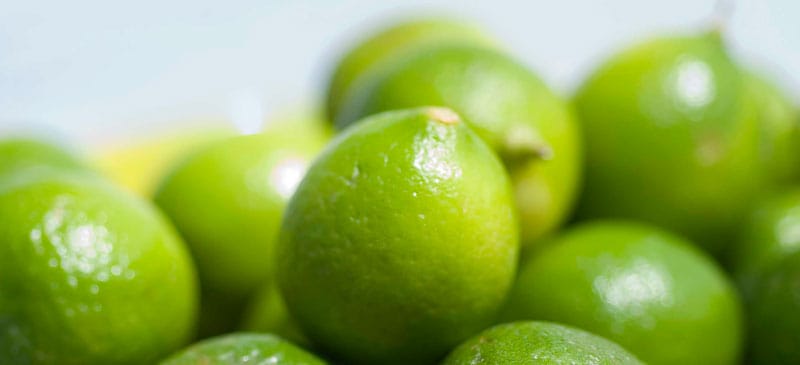This Dr. Axe content is medically reviewed or fact checked to ensure factually accurate information.
With strict editorial sourcing guidelines, we only link to academic research institutions, reputable media sites and, when research is available, medically peer-reviewed studies. Note that the numbers in parentheses (1, 2, etc.) are clickable links to these studies.
The information in our articles is NOT intended to replace a one-on-one relationship with a qualified health care professional and is not intended as medical advice.
This article is based on scientific evidence, written by experts and fact checked by our trained editorial staff. Note that the numbers in parentheses (1, 2, etc.) are clickable links to medically peer-reviewed studies.
Our team includes licensed nutritionists and dietitians, certified health education specialists, as well as certified strength and conditioning specialists, personal trainers and corrective exercise specialists. Our team aims to be not only thorough with its research, but also objective and unbiased.
The information in our articles is NOT intended to replace a one-on-one relationship with a qualified health care professional and is not intended as medical advice.
What Is Key Lime? Benefits, Uses, Recipes & More
June 12, 2022

There’s key lime pie, key lime flavored yogurt, key lime juice — but you may be wondering, what exactly is key lime, and how is it different than your standard green lime at the grocery store?
Key limes and “conventional limes” originate in different areas, look slightly different but have a similar taste. Key limes are touted for their tarter, sweeter flavor, but they aren’t always available at your local grocery store, which is why standard limes are often used in recipes to replace them.
If you get your hands on a key lime, though, it adds a unique taste to baked goods, marinades and cocktails. Plus, these type of limes offer plenty of vitamin C and antioxidants.
Key Lime vs. Lime
The major difference between key lime and what we think of in the U.S. as conventional limes are their origins. The limes you see most often at the grocery store are Citrus latifolia, known as Persian or Tahitian limes, and key limes are Citrus aurantifolia, known as Mexican or West Indian limes.
Key limes are smaller, but they are known for their bolder, sweet and tart flavors. Key limes are also more acidic, have more seeds and have yellowish skin when ripe.
While key limes are valued for their flavor and strong citrus aroma, they are also more costly.
When it comes to nutrition, key limes and Persian limes are similar, both offering fiber and vitamin C, with few calories. They are basically interchangeable when used in recipes, although key limes offer a bolder taste.
Key Lime Nutrition
Key lime nutrition is similar to Persian lime, even though it’s a smaller fruit. It contains a healthy serving of vitamin C and fiber, with few calories.
It also provides health-boosting metabolites, including:
- alkaloids
- carotenoids
- flavonoids
- phenolic acids
- triterpenoids
- coumarins
- essential oils
One medium-sized key lime (about 67 grams) contains approximately:
- 20 calories
- 7 grams carbohydrates
- 2 grams fiber
- 21 milligrams vitamin C (35 percent DV)
Key Lime Benefits
Research published in Pharmacognosy Review reveals that, when used daily, key lime has antibacterial, anticancer, anti-diabetic, antifungal, anti-inflammatory and antioxidant effects. It provides metabolites that help protect the body from disease.
Key lime benefits come from its nutritional value and antioxidant content. Here’s a rundown of its positive impacts on your health:
1. Good Source of Vitamin C
Vitamin C is a crucial part of a healthy diet, and juicing one key lime provides about 35 percent of your daily value. Many of key lime’s benefits come from its vitamin C content, including its ability to boost the health of your immune system, heart and skin.
Vitamin C is perhaps most known for its antioxidant effects, allowing it to help neutralize free radicals and reduce the risk of inflammation. It has also proven to support our epithelial barrier function against pathogens.
2. Provides Dietary Fiber
Eating fiber foods is important for healthy digestion, cardiovascular health, and weight loss or maintenance. Adding key lime juice to water, smoothies or recipes is an easy way to promote regularity, while promoting detoxification.
Research indicates that because the standard Western diet is so high in processed foods, many people aren’t consuming enough fiber foods. Adding foods containing fiber into your diet can help improve both metabolic and overall health, according to researchers.
3. May Have Anticancer Activity
A 2016 study found that because of key lime’s phytochemical substances, including alkaloids, carotenoids and flavonoids, it has potential anticancer properties.
When C. aurantifolia was studied for its efficacy against carcinogenesis, researchers found that it may be useful for cancer therapy by mechanisms such as stopping cancer cell mobility in the circulatory system, inhibiting metastasis and inducing tumor suppression.
How to Buy and Use (Recipes)
Key limes aren’t as accessible in the U.S. as conventional limes, though they grow in tropical and subtropical climates, such as Floria, California and Mexico.
Unlike Persian limes, key limes don’t ripen after being picked, and they are also more delicate. Ideally, they should be used within one to two days after becoming ripe.
A ripe key lime will be yellow, firm and feel heavier than it looks.
You can use key limes the same way you use conventional limes. Start by washing it, and roll it if you’d like, which can help to loosen the juice.
Key limes can be juiced or zested for a range of recipes, from baked goods to marinades and cocktails.
The fruit is perhaps most well-known for its presence in key lime pie, but you may be surprised to learn that most commercial key lime pies are made with conventional limes. In fact, the two lime types are commonly used interchangeable because the tastes are similar, with key limes a bit tarter.
Because key limes are much smaller than common limes, they don’t make as much juice, so keep that in mind if you’re using conventional limes in a recipe in place of key limes. While a common lime makes two tablespoons of lime juice, a key lime will only make about two teaspoons, so you will need to purchase and use more of them.
Ready to get started with some key lime recipes? Try these:
Risks and Side Effects
It is generally considered safe to consume key limes.
If you have a citrus allergy, you may experience allergy symptoms after consuming these limes. This may include flushed skin, hives, swelling and trouble swallowing.
If you experience any of these symptoms, stop eating the lime immediately, and contact your doctor if the issue continues.
Conclusion
- The major difference between key lime and what we think of in the U.S. as conventional limes are their origins. The limes you see most often at the grocery store are Citrus latifolia, known as Persian or Tahitian limes, and key limes are Citrus aurantifolia, known as Mexican or West Indian limes.
- Key limes are smaller, but they are known for their bolder, sweet and tart flavors. They are also more acidic, have more seeds and have yellowish skin when ripe.
- Are key limes healthy for you? Yes! They offer vitamin C, fiber and a long list of healthy metabolites that have been shown to possess antioxidant and anti-inflammatory properties.
- It’s easy to use them in your daily diet. The juice of the lime can be used in smoothies, cocktails, baked goods and more. Use key lime anywhere you’d use conventional limes.










